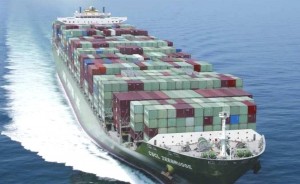Container volumes soar while African logistics chains buckle

In spite of a surge in imports, conference participants were told that poor linkages among transport modes was causing long delays.
December 15–Worldwide shipping container volumes are set to break the 200-million twenty-foot equivalent unit (TEU) threshold by the end of 2017, however sub-Saharan Africa continues to be hamstrung by infrastructure bottlenecks after long years of neglect and slow adaption to modern logistics trends.
However in East Africa, Dar es Salaam and Mombasa ports are in the midst of ambitious expansion and upgrading of facilities with new container terminals as a centre-piece of these developments.
Speaking at the inaugural two-day Terminal Operators Conference Africa 2017 at the Durban International Convention Centre this week, Siyabonga Gama, the Transnet Group CEO said, “The combination of years of under-investment and exploitation has meant that African ports, roads and railways were mainly designed and built to facilitate transportation of raw materials and resources to markets outside the continent.”
The problems include poor linkages among transport modes causing long delays and raising costs in the movement of international freight. Many logistical services on the continent are in their infancy and their development is being impeded by a wide array of administrative, regulatory and governance barriers.
Besides limited advance planning sub-Saharan Africa is also beset by a lack of capacity building and skills development in the freight-handling sector on top of under-investment in port, rail and pipeline infrastructure and not enough advance planning.
Gama said the cost of moving goods was still very high and is passed on to the consumer, thereby impeding Africa’s ability to be competitive in pricing. “Effective transport networks are a key component of the investment climate, enabling access to markets and reducing the costs of doing business. Africa’s challenges are not only the lack of investments in infrastructure, but also the distance between the hinterland and port.”

 African Heads of state head to South Korea next week for Summit talks
African Heads of state head to South Korea next week for Summit talks
 Trading leads as main source of income for Ugandans
Trading leads as main source of income for Ugandans
 New leadership for bankers’ umbrella as total assets top $12 billion
New leadership for bankers’ umbrella as total assets top $12 billion
 Brussels Airlines to announce Nairobi service
Brussels Airlines to announce Nairobi service
 SITA promises enhanced travel experience after Materna acquisition
SITA promises enhanced travel experience after Materna acquisition
 Saudia’s 105 aircraft order stretches A320neo lead over rival Max
Saudia’s 105 aircraft order stretches A320neo lead over rival Max
